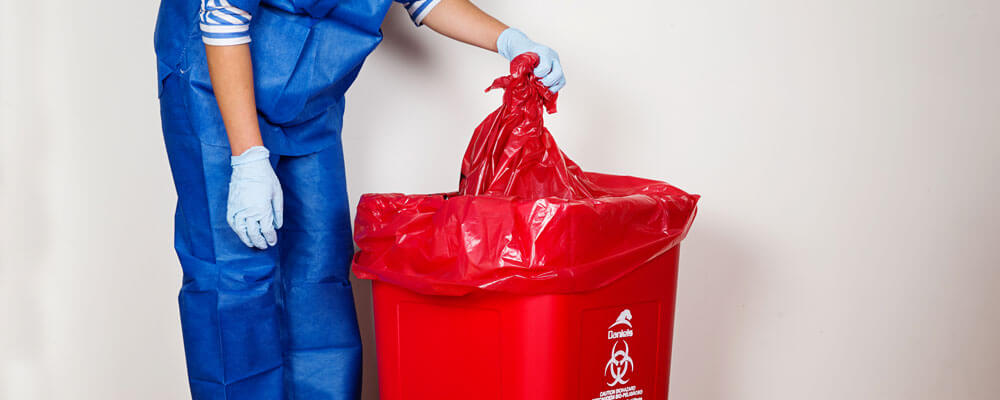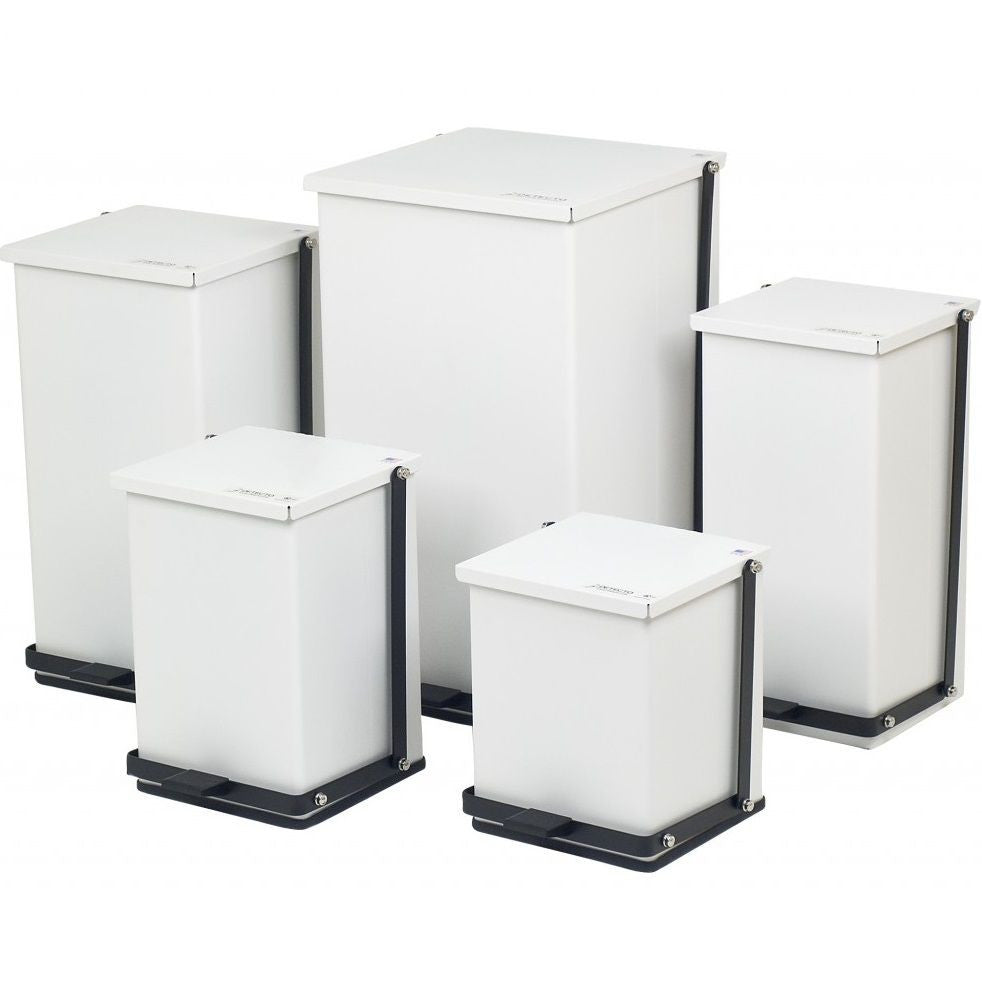Shielding Health And Wellness: Expert Medical Waste Removal Services for a Clean Atmosphere
Shielding Health And Wellness: Expert Medical Waste Removal Services for a Clean Atmosphere
Blog Article
Minimize Prices and Optimize Safety And Security: Effective Medical Garbage Disposal Techniques
Efficient clinical waste disposal techniques are critical for health care centers to minimize expenses and take full advantage of safety. By carrying out proper segregation and classification, reliable packaging and labeling, risk-free transport and handling, effective treatment and disposal approaches, and conformity with regulatory guidelines, health care centers can ensure the liable and risk-free administration of clinical waste.

Correct Segregation and Categorization
Appropriate segregation and categorization are critical components of efficient medical garbage disposal methods, making certain the safety of healthcare workers, the public, and the environment - medical waste removal services. medical waste disposal services with WasteX. By separating different sorts of clinical waste at the point of generation, medical care centers can lessen the risk of cross-contamination and potential injury to individuals and ecosystems
One of the essential consider proper partition is the identification and category of medical waste. This entails categorizing waste right into different groups, such as transmittable, harmful, radioactive, or pharmaceutical waste. Each classification requires certain handling, storage, and disposal techniques to avoid any kind of negative effects on human health and wellness and the environment.
Moreover, proper segregation additionally includes the usage of color-coded containers and labels to plainly determine and set apart the various kinds of clinical waste. This assists medical care workers and waste management employees to easily acknowledge and manage the waste appropriately. For instance, red containers may be utilized for transmittable waste, while yellow containers may be designated for contaminated materials.
Along with partition, proper categorization likewise entails the proper packaging and containment of clinical waste. This makes certain that waste is securely stored and delivered without posturing any risks to individuals or the atmosphere. Making use of puncture-resistant and watertight containers, as well as properly sealing and labeling them, assists to stop any type of unintentional exposure or launch of harmful compounds.
Efficient Packaging and Identifying
Effective product packaging and labeling play an essential role in ensuring the safe and effective disposal of medical waste. Proper packaging is essential to avoid leakage, damage, or splilling throughout transport and handling. It helps to minimize the risk of contamination and protects healthcare employees, waste administration workers, and the atmosphere from potential hazards.
Clinical waste needs to be packaged in strong and leak-proof containers that are immune to pierce and breakage. These containers should be effectively secured to stop any type of leakage. In addition, the packaging should have the ability to stand up to the conditions of transport, consisting of temperature variants and harsh handling.
Labeling is just as crucial as it offers crucial details regarding the materials of the waste and any kind of potential dangers connected with it. The tags ought to consist of the name of the health care facility, the sort of waste, and any kind of special delivery directions. Standardized and clear labeling makes certain that waste administration employees can quickly recognize and manage the waste appropriately.
Reliable packaging and labeling likewise help in the appropriate partition and categorization of clinical waste. Clear labeling permits very easy recognition of different waste streams, such as transmittable waste, sharps, or pharmaceutical waste. This helps in enhancing the disposal procedure and guaranteeing that the waste is dealt with or gotten rid of according to governing guidelines.
Safe Transportation and Handling
Making certain the safe transportation and handling of clinical waste is of utmost importance in order to avoid any kind of possible health and ecological threats. Medical waste, such as sharps, polluted products, and pharmaceutical waste, have to be properly packaged and dealt with to lessen the threat of direct exposure to damaging materials and virus.
Transferring medical waste needs conformity with rigorous laws and guidelines established by ecological companies and neighborhood authorities. These laws intend to shield the health and safety of workers associated with waste management and protect against the release of harmful products right into the atmosphere.
To make certain secure transport, clinical waste needs to be positioned in watertight and puncture-resistant containers that are appropriately secured and identified. These containers must be secured in a way that avoids spills or breakage throughout transportation (medical waste removal service). Additionally, it is essential to use specialized vehicles outfitted with ideal security functions to carry medical waste. These lorries need to have adequate ventilation and be designed to protect against leak or contamination.
Managing medical waste likewise calls for proper training and adherence to security methods. Personnel associated with the handling of medical waste must put on appropriate personal protective tools (PPE) such as handwear covers, masks, and gowns to reduce the danger of exposure. They ought to additionally follow strict health practices to stop the spread of infections and make certain the safe disposal of waste.
Effective Treatment and Disposal Methods
Executing proper therapy and disposal techniques is vital in managing clinical waste effectively and minimizing potential health and environmental threats. Clinical waste, that includes sharps, transmittable products, chemicals, and pharmaceuticals, can pose substantial hazards if not handled and gotten rid of effectively. There are several treatment and disposal methods readily available that follow governing standards and advertise risk-free practices.
One typical approach is incineration, which entails melting the waste at high temperatures. Incineration works in ruining microorganisms and minimizing the quantity of waste, yet it can release harmful toxins right into the air otherwise effectively controlled. It is essential to utilize modern burners outfitted with exhaust control modern technologies.
An additional approach is autoclaving, which utilizes steam and pressure to sterilize the waste. Autoclaving works in eliminating virus and minimizing the news volume of waste, but it calls for cautious tracking and maintenance to ensure correct performance. The sanitized waste can then be securely thrown away in a garbage dump.
Chemical therapy is an additional choice, which involves making use of disinfectants or other chemicals to counteract microorganisms. This method is generally utilized for fluid waste, such as laboratory samplings. It is crucial to use proper chemicals and follow correct procedures to make certain effective therapy and avoid ecological contamination.

Conformity With Regulatory Guidelines
Sticking to governing guidelines is crucial in guaranteeing correct compliance with clinical waste disposal techniques. These guidelines are put in area to protect public health and wellness, protect against environmental contamination, and preserve office safety. Conformity with governing guidelines is vital for medical care facilities, as non-compliance can lead to charges, penalties, and reputational damages.
Regulative standards detail the appropriate handling, storage space, transport, and disposal of clinical waste. These guidelines weblink likewise address the segregation of various waste streams, such as sharps, transmittable waste, and pharmaceutical waste.
To keep conformity, medical care centers must establish extensive waste administration programs that include team training, normal audits, and ongoing monitoring. It is necessary to maintain updated with any changes or updates to governing standards, as techniques might progress gradually. By staying informed and implementing correct procedures, healthcare facilities can lower the capacity for regulatory infractions and protect the health and wellness of their personnel, patients, and the bordering neighborhood.
Conclusion
Finally, carrying out efficient clinical waste disposal methods is essential for taking full advantage of and reducing prices security. Correct segregation and classification, efficient product packaging and labeling, secure transportation and handling, and efficient treatment and disposal techniques are essential actions to ensure conformity with governing guidelines. medical waste removal. By sticking to these approaches, healthcare facilities can secure the setting and public health and wellness while additionally reducing monetary worries related to clinical waste monitoring
By executing proper partition and classification, efficient packaging and labeling, risk-free transport and handling, effective treatment and disposal techniques, and conformity with governing guidelines, healthcare facilities can guarantee the secure and liable administration of clinical waste. Red containers might be made use of for infectious waste, while yellow containers may be designated for unsafe waste.
Clear and standardized labeling guarantees that waste administration employees can conveniently recognize and handle the waste appropriately. (medical waste disposal services with WasteX)
Clear labeling permits for simple identification of different waste streams, why not find out more such as infectious waste, sharps, or pharmaceutical waste. These standards likewise deal with the segregation of various waste streams, such as sharps, contagious waste, and pharmaceutical waste.
Report this page